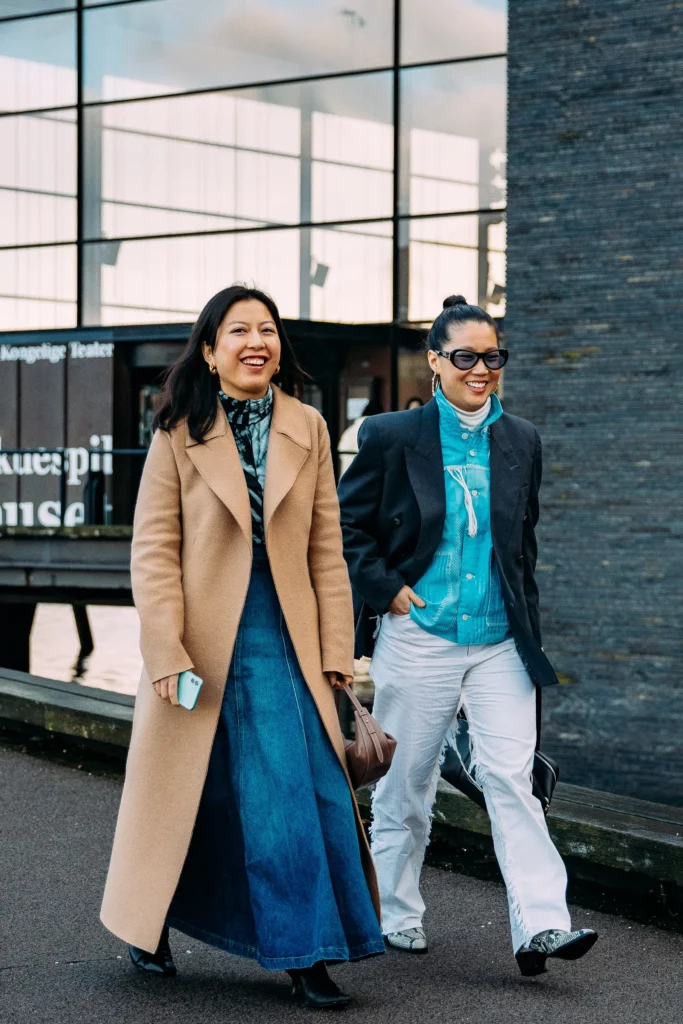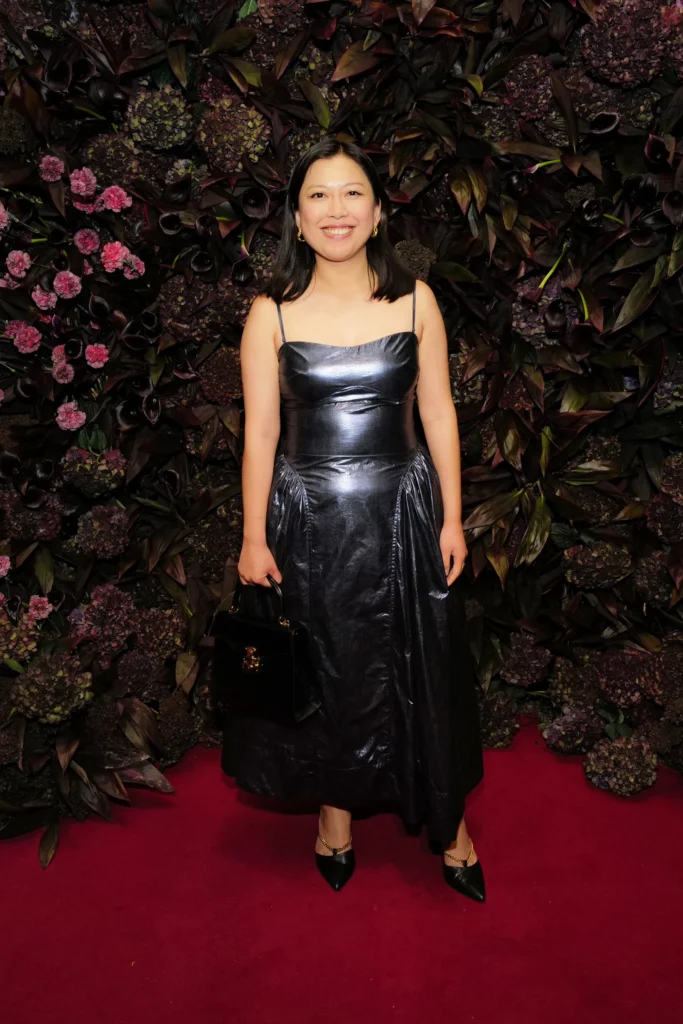When I committed to adding just five things to my wardrobe at the beginning of 2023, I wasn’t particularly daunted. If anything, I worry it’s not ambitious enough. After all, as sustainability editor at British Vogue I always tell people to buy better and buy less – and being allowed to buy five new pieces sounds pretty generous.
Why five things? Well, according to a report published in 2022 by the Hot or Cool Institute, everyone in the world would need to reduce their annual fashion consumption by this amount in order for the fashion industry to stay within the carbon budget: the reduction in greenhouse gases required emissions to limit global warming to 1.5 degrees Celsius – if nothing else changes.
Small items such as underwear, hats, scarves, and socks do not count, but bags and shoes do. Gifts are important (Lewis Akenji, managing director of the Hot or Cool Institute, jokes: “Gift-buyers are cheating you because they buy more than their five items.”) Second-hand items are important, too, even if they are better than new. Takes up a smaller carbon footprint (more on that later).
Judging by the reaction from everyone I told (ranging from nervous “Good luck” to “There’s no way I can do that!”), I quickly realized the challenge – what Tiffanie Darke calls “The 5 Principles” rule of 5) – In fact, this is not an easy task. From the beginning, I wasn’t honest about my shopping habits. You see, even though I write about the many issues in the fashion industry day in and day out, I’m still not immune to the power of the marketing machine and ever-changing trends. Shocking: I also make impulse buys when I see someone on Instagram wearing a cute dress, or when everyone starts wearing red (we often find ourselves absorbing these influences subconsciously).
Working in this industry also comes with a series of invitations to events or big fashion events, as well as the unspoken pressure to look “a certain way”. As fashion week rolled around at the beginning of the year, I experienced the cliché of old age: I feel like I have nothing to wear. Blame it on the street stylists, but everything in my wardrobe feels too “normal” for runway season.
This was the first (and biggest) mistake I made: giving in too easily to my anxieties and whims. After seeing a few coworkers in the office wearing denim maxi skirts, I thought this would be the perfect addition to my wardrobe. So I took the plunge and purchased a denim skirt from Raey, made from organic and recycled cotton. Around the same time, I discovered a beloved Proenza Schouler tie-dye turtleneck at Vestiaire Collective—I thought this piece would be perfect paired with a skirt and jeans. Toward the end of fashion month, I also purchased a leather skirt from Iris & Ink (side note: while leather may have a large carbon footprint, I know it’s a classic piece that will last for years to come).

After buying three of the five items so quickly, I promised myself that these were the cornerstones of my wardrobe that I could pull out again at the end of the year, and importantly, for years to come. This is good, I thought, so I can invest in two more pieces for the warmer months.
But when I was lucky enough to be invited to a press conference in April to visit a Pandora factory in Thailand (full disclosure: yes, I do fly, but try to be wary of it), I realized I didn’t have the right Swimsuit in the hotel pool, I haven’t been to any tropical countries in the past three years. So I bought a classic black swimsuit from Mara Hoffman, made from Tencel (a sustainably sourced wood fiber), and I thought it was a smart purchase.
Does a swimsuit comply with the Five Things Rule? “It depends on whether you want to count it as sportswear,” Akenji, one of the report’s lead authors, told me. A few laps around the pool before lounging on a sun lounger didn’t sound like much of a sport to me – so I marked it down as my fourth purchase of the year.
The final piece in my wardrobe is by far the best: Gabriela Hearst’s Demi bag—an accessory I’ve had my eye on for a long time. I’ve used it countless times since this summer (check out my Instagram page and you’ll see I’m wearing it with almost every outfit) and it’s the ultimate versatile, timeless investment.
But of course, this means that by June I’ve used up all five of my items, forcing me to completely quit shopping for the rest of the year. In many ways, this was a useful reset. This means I no longer mindlessly browse sites like Net-A-Porter, Matches and Farfetch, Vestiaire Collective and eBay. When I have a big event to attend, I rent a dress or wear something I already have in my closet.

Still, I felt conflicted. Knowing that independent and eco-conscious brands are struggling in this challenging economic climate, I feel guilty for not supporting them with my wallet. Given that all of my purchases, whether new or used, are made with sustainability in mind, shouldn’t this make sense?
“The five-piece project is really about providing a direction,” Akenji said. “That’s the problem with averaging out—even less carbon-intensive, more sustainable clothing doesn’t pass that standard.” As for second-hand clothing, it’s difficult to calculate how much its carbon footprint might be lower, given so many variables. “There is no fixed time, and then we call it secondhand; the change in ownership of an item tells us nothing about the lifespan of the product itself,” he explains. “I wouldn’t say second-hand items should count as one of the five items, but I wouldn’t say it’s 50%. It really comes down to your judgment—you give yourself a little more grace.”
Impressively, Akenji has only bought one pair of jeans this year (“Looking at my wardrobe, I realized I could go years without buying anything”), but stresses that these five items are not meant to make anyone “feel Guilty”. Instead, it helps us step back and think more about the way we consume clothes, both on an individual and collective level. Considering the average Brit buys 28 items a year, according to a recent report from WRAP, any reduction is a start. Meanwhile, policy changes remain the biggest tool for slashing the fashion industry’s carbon footprint — meaning that, in theory, five items may actually increase in the future.
Personally, I learned a lot from this year’s challenges. First, the importance of maintaining your personal style when trying to buy less. I’m a formal person, so naturally I don’t wear the items I bought earlier this year that often. This seems like a no-brainer, but as someone who has always longed for the perfect capsule wardrobe (white shirt, jeans, blazer), I figured it out during this year’s challenge.
Second, the amount we buy each year will undoubtedly change over time. Like many people, I haven’t bought much during the pandemic, and I’ve quite literally stopped wearing items from my previous wardrobe. Thinking of a five-piece plan as gospel doesn’t necessarily take into account our changing body shapes, or the basic number of clothes we start it with.
Going into next year, I’m still going with my five-piece plan while giving myself some flexibility if I do buy something second-hand or want to support a talented, environmentally conscious designer. After all, we need more of these businesses moving forward. As they like to say in the environmental movement, it’s all about progress, not perfection.
